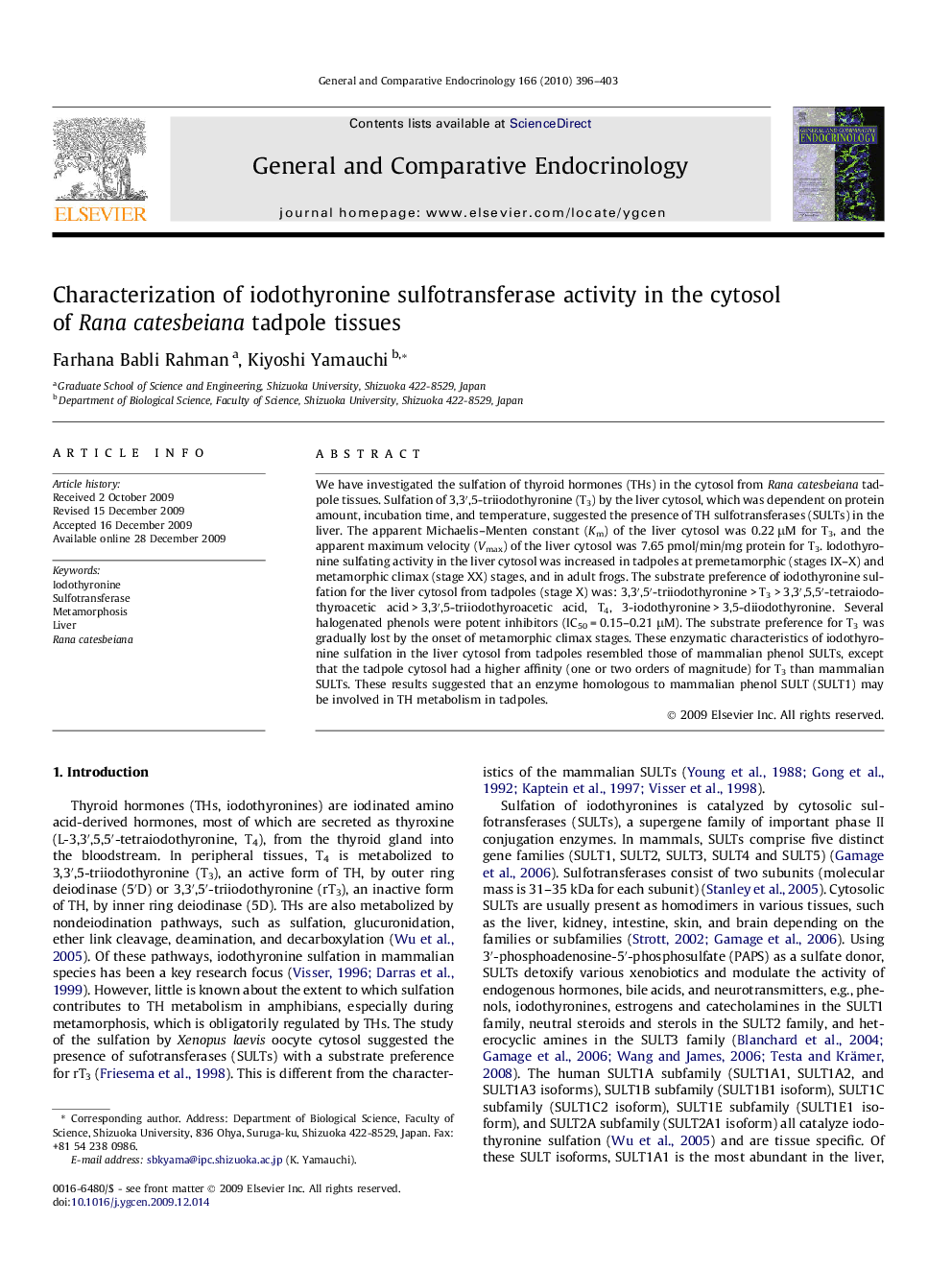| Article ID | Journal | Published Year | Pages | File Type |
|---|---|---|---|---|
| 2801131 | General and Comparative Endocrinology | 2010 | 8 Pages |
We have investigated the sulfation of thyroid hormones (THs) in the cytosol from Rana catesbeiana tadpole tissues. Sulfation of 3,3′,5-triiodothyronine (T3) by the liver cytosol, which was dependent on protein amount, incubation time, and temperature, suggested the presence of TH sulfotransferases (SULTs) in the liver. The apparent Michaelis–Menten constant (Km) of the liver cytosol was 0.22 μM for T3, and the apparent maximum velocity (Vmax) of the liver cytosol was 7.65 pmol/min/mg protein for T3. Iodothyronine sulfating activity in the liver cytosol was increased in tadpoles at premetamorphic (stages IX–X) and metamorphic climax (stage XX) stages, and in adult frogs. The substrate preference of iodothyronine sulfation for the liver cytosol from tadpoles (stage X) was: 3,3′,5′-triiodothyronine > T3 > 3,3′,5,5′-tetraiodothyroacetic acid > 3,3′,5-triiodothyroacetic acid, T4, 3-iodothyronine > 3,5-diiodothyronine. Several halogenated phenols were potent inhibitors (IC50 = 0.15–0.21 μM). The substrate preference for T3 was gradually lost by the onset of metamorphic climax stages. These enzymatic characteristics of iodothyronine sulfation in the liver cytosol from tadpoles resembled those of mammalian phenol SULTs, except that the tadpole cytosol had a higher affinity (one or two orders of magnitude) for T3 than mammalian SULTs. These results suggested that an enzyme homologous to mammalian phenol SULT (SULT1) may be involved in TH metabolism in tadpoles.
